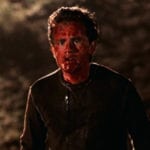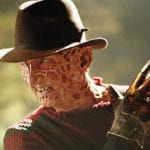 Travel
Travel  Travel
Travel  Movies and TV
Movies and TV 10 Actors Hidden in Your Favorite Movies
 Our World
Our World 10 Science Facts That Will Change How You Look at the World
 Pop Culture
Pop Culture 10 Incredible Female Comic Book Artists
 Crime
Crime 10 Terrifying Serial Killers from Centuries Ago
 Technology
Technology 10 Hilariously Over-Engineered Solutions to Simple Problems
 Miscellaneous
Miscellaneous 10 Ironic News Stories Straight out of an Alanis Morissette Song
 Politics
Politics 10 Lesser-Known Far-Right Groups of the 21st Century
 History
History Ten Revealing Facts about Daily Domestic Life in the Old West
 Weird Stuff
Weird Stuff 10 Everyday Products Surprisingly Made by Inmates
 Travel
Travel 10 Natural Rock Formations That Will Make You Do a Double Take
 Movies and TV
Movies and TV 10 Actors Hidden in Your Favorite Movies
 Our World
Our World 10 Science Facts That Will Change How You Look at the World
Who's Behind Listverse?

Jamie Frater
Head Editor
Jamie founded Listverse due to an insatiable desire to share fascinating, obscure, and bizarre facts. He has been a guest speaker on numerous national radio and television stations and is a five time published author.
More About Us Pop Culture
Pop Culture 10 Incredible Female Comic Book Artists
 Crime
Crime 10 Terrifying Serial Killers from Centuries Ago
 Technology
Technology 10 Hilariously Over-Engineered Solutions to Simple Problems
 Miscellaneous
Miscellaneous 10 Ironic News Stories Straight out of an Alanis Morissette Song
 Politics
Politics 10 Lesser-Known Far-Right Groups of the 21st Century
 History
History Ten Revealing Facts about Daily Domestic Life in the Old West
 Weird Stuff
Weird Stuff 10 Everyday Products Surprisingly Made by Inmates
10 Films That Aren’t Really Based on a True Story
If the popularity of true crime documentaries and reality TV is anything to go by, there is a pervasive, widespread appetite for the true story on screen. Something about a film based on actual events sets it apart from the rest. It offers audiences a glimpse into something awe-inspiring or gut-churning that has happened to someone else or could happen to them, making the fiction all the more potent.
Recognizing this fact, filmmakers will often do anything to “sell” the reality of their fiction; and marketing teams will do anything to promote a film. But this approach has blurred the lines between fiction and reality. Nestled among the authentic representations of people and events are a few films that aren’t actually based on a complete story. Sure, filmmakers may be inspired by one or two events and adapt them into a film, even if they occurred at different times or in different places.
However, these movies are explicitly marketed as being “based on a true story,” but they simply never happened as the film portrays. Over the years, they have led audiences up the garden path before pushing them into the pond. But, thanks to this article, you will never be fooled again.
Related: Top 10 True Stories More Interesting Than The Myths They Inspired
10 Fargo (1996)
Joel and Ethan Coen’s Minnesotan black comedy, Fargo, opens on a white-on-black title card announcing “THIS IS A TRUE STORY.” But it isn’t, it wasn’t, and it never will be.
Fargo tells the story of hapless car salesman Jerry Lundegaard (William H. Macy), who hires two career criminals to kidnap his wife to extort his father-in-law (owner of the car dealership where Jerry works) for the kind of money that will allow him to become his own man. And, with a little help from the pregnant police chief (Frances McDormand), absolutely nothing goes to plan.
The film claims to be based on events that took place in Minnesota in 1987, with only the names changed for privacy. But the Coen brothers added the true story disclaimer because they “wanted to make a movie just in the genre of a true story movie. You don’t have to have a true story to make a true story movie.”
Fargo can be considered a series of random events stitched together into a single movie. Though the Coens have often been credited with pioneering the sly opening gambit of pretending to be a true story, it is a tradition that goes much farther back…[1]
9 The Last House on the Left (1972)
Similar to Fargo, The Last House on the Left opens with the text: “The events you are about to witness are true. Names and locations have been changed to protect those individuals still living.” But, also like Fargo, it is merely narrative deceit.
Such an announcement was designed by director Wes Craven to put viewers on edge, setting them up for something grisly and unforgiving while ensuring they would buy whatever came next. Especially when what comes next is an exploitation thriller centering around the rape and murder of a young woman and her friend and the subsequent bloody revenge enacted by her parents.
The Last House on the Left takes many of its stylistic features from the documentary format. It uses on-location sound recording and handheld cameras because that was Craven’s bread and butter—this was his first feature film—and up until this point, he had only been involved in the production end of documentary features. But, far from being based on anything “true,” The Last House on the Left is, in fact, a loose remake of Ingmar Bergman’s The Virgin Spring (1960).[2]
8 The Texas Chainsaw Massacre (1974)
Trading on the commercial success and cult following of The Last House on the Left, which made $3 million against a budget of less than $100,000, The Texas Chainsaw Massacre copied the sentiment of its predecessor’s opening message with a long crawl of text and accompanying narration claiming the film to be an account of a real-life tragedy. It may seem stuffy and hokey now, but it was a promotional strategy that paid off big time.
While The Last House only brought audiences a harrowing hour and a half of violence and humiliation, Texas Chainsaw birthed a legend: the human skin-wearing Leatherface. It is this character that ensured the fiction’s longevity and spawned a total of eight sequels, prequels, and reboots.
Unfortunately—or perhaps, fortunately—none of the tale is true. The story actually came from director Tobe Hooper’s frustration with frenzied crowds while Christmas shopping in 1972. Nearing a display rack of chainsaws, he imagined slicing through the crowds to get what he wanted, and the rest is history; he hurried home and penned the story treatment in one sitting.[3]
7 Flight (2012)
Rarely one to string viewers along, director Robert Zemeckis is best known for such heartwarming, family-friendly fare as Back to the Future and Forrest Gump. And yet, the much harder-hitting Denzel Washington drama-thriller Flight—in which alcoholic pilot Whip Whitaker manages to land a failing plane and is investigated after the fact—was falsely portrayed in the media as being based on a true story.
Zemeckis later came out in an interview to say that it is “completely fiction,” drawing instead on an amalgamation of malfunctions and crashes from the preceding decades, which were thrown together and given the sensationalist Hollywood treatment.
Nevertheless, Flight made a modest killing at the box office, raking in over five times its production budget. It also inspired another air-based drama film to boot: the Tom Hanks feature Sully, centering around the verifiably real pilot who landed an airplane on the Hudson River back in 2009.[4]
6 The Strangers (2008)
The Strangers was instrumental in revitalizing the home invasion horror movie, popularizing the genre for a new generation and paving the way for runaway hits like the Purge franchise.
Opening narration and text in the style of Texas Chainsaw introduces the central characters Kristen (Liv Tyler) and James (Scott Speedman) as a real couple whose vacation time at their family’s summer home in 2005 turns dark as three masked strangers launch a deadly assault upon the house.
But no such couple ever existed. Writer and director Bryan Bertino has admitted he weaved the story together from his knowledge of the Manson family murders. The interest in Manson’s story stemmed from a childhood obsession that began with his father giving him Helter Skelter—attorney Vincent Bugliosi’s account of the Manson cases he tried. Bertino claims he was fascinated by the victims’ experiences and wondered what their untold story would be.[5]
5 Picnic at Hanging Rock (1975)
Picnic at Hanging Rock is set at a girls’ school in early 1900s Australia, where a Valentine’s Day picnic trip leads to the mysterious disappearance of three girls and their teacher.
Every screen adaptation of Picnic at Hanging Rock—and the 1967 Joan Lindsay book it is based on—purport to be true stories, but none are. So ubiquitous is their legend, though, that the story has gone beyond pop culture to permeate social and folk history, recognized widely yet inaccurately as a real happening.
According to Lindsay’s live-in housekeeper, Rae Clements, the author wrote the novel in a short spell based upon an especially vivid dream, centering on a summer picnic at the very real Hanging Rock, which Joan had visited many times throughout her childhood. The fact of the film and novel’s most important location being real has only added to the mystery and sense of folkloric ownership that locals feel over the tale, spurring it on and keeping it alive through the years.[6]
4 The Amityville Horror (1979)
The Amityville Horror has a long and winding history in contemporary Western folklore. So deep are its roots in our subconscious, in fact, that (much like Picnic at Hanging Rock) many people take it for granted that the film is based on a true story.
The story goes that George and Kathy Lutz (James Brolin and Margot Kidder) and their children move into a new home in Amityville, where they are terrorized by supernatural forces, which summon flies and slime and blood to haunt them. Priests are called, nuns are blighted, and not only were a whole family murdered in their sleep in that very house, but it was once owned by an 18th-century Satanist.
Unlike most other cases of mistaken “true story” belief, this one is actually not the filmmakers’ fault. And neither is it the fault of the source novel’s author Jay Anson. No, the origin of the Amityville story actually lies with the Lutzes. George and Kathy were real people who moved into a house previously occupied by the serial killer Ronald DeFeo Jr. They then decided they could make a quick dime. Thus, they conspired with DeFeo’s lawyer, who was hoping to get a retrial for his client, and concocted the whole thing over a bottle of wine—haunting, flies, priests, the lot.
While there is some truth to the story—the real murders of six people, for instance—the paranormal elements are highly debated and mostly disregarded as pure fiction. Over the years, the real story has emerged in bits and pieces. But the legend lives on, as does the house—though it has been renovated and its address changed.[7]
3 Wolf Creek (2005)
Wolf Creek is a sleeper hit that has still yet to wake up, having largely been forgotten by mainstream audiences—if they ever saw it in the first place. Yet it still frequently ranks high on critics’ lists, such as Esquire’s 65 Scariest Movies of All Time.
The film, which boldly announces that it is “based on actual events,” tells the story of three backpackers—Liz, Kristy, and Ben (Cassandra Magrath, Kestie Morassi, and Nathan Phillips)—whose car breaks down in Australia’s Wolf Creek National Park. They accept help from a local but soon find their trust misplaced as he tortures and kills them in a deadly game of cat and mouse.
Though Ben escapes, title cards at the end of the film tell viewers that Liz and Kristy were never found. Technically, this is true, as Liz and Kristy never existed in the first place. None of the events of Wolf Creek happened in real life, and director/writer Greg McLean has admitted that his villain was based on a lot of different people, including Bradley Murdoch and Ivan Milat, two actual serial killers. Then he took some well-known Australian personas—think Crocodile Dundee and Steve Irwin—and gelled them all together to offer a killer character that represented the picture of a stereotypical Australian, or what non-Australians view as real. Crikey![8]
2 The Blair Witch Project (1999)
The Blair Witch Project has, in the years since its release, come to be recognized for popularizing the found-footage genre in horror cinema. Using handheld cameras operated by the cast, it tells the story of three student filmmakers—Heather Donahue, Joshua Leonard, and Michael C. Williams (all playing themselves)—who go searching for the legendary Blair Witch in the Black Hills near Burkittsville, Maryland.
According to the film, the three went missing, leaving only their cameras behind. In this sense, Blair Witch went beyond traditional “true story” marketing by actually positioning the movie upon release as real footage. The viral marketing behind the film not only made it one of the first films to be promoted with an extensive internet campaign but was so convincing it caused widespread panic among viewers. But this isn’t where its duplicity ends: There is no real Blair Witch, no Blair Witch legend, and the film wasn’t even shot in Burkittsville.
Directors Daniel Myrick and Eduardo Sánchez came up with the idea in 1993, tapping into their instinctual fear of the low-budget hits that preceded them. And, following in the lucrative footsteps of those cinematic forebears, they made around $250 million against a budget of $600,000.[9]
1 The Fourth Kind (2009)
Unfortunately, not all “true story” cinema goes the way of The Blair Witch Project, and many flicks are lost in time, forgotten by the very crowds they were built to please. And, if ever there was a perfect instance of this, it is the misguided alien abduction thriller The Fourth Kind.
The film opens with Milla Jovovich informing the audience that her character, psychologist Dr. Abigail Tyler, is real and that archival footage will be played alongside the film’s dramatic recreations. In reality, the “archive footage” is of actress Charlotte Milchard, and though it should perhaps go without saying, none of the film’s alien abductions happened. This is despite the fact that it was widely circulated that this film was based on actual events, backed by a fake website and fake stories attributed to real papers.
The Fourth Kind is an example of not just a marketing campaign but an entire production going too far to sell a film as a true story. As a result, the Alaskan press brought a legal case against NCB Universal. A settlement was reached to stop the organization from creating fake stories attributed to Alaska publications and fake news websites to promote their movies.[10]








